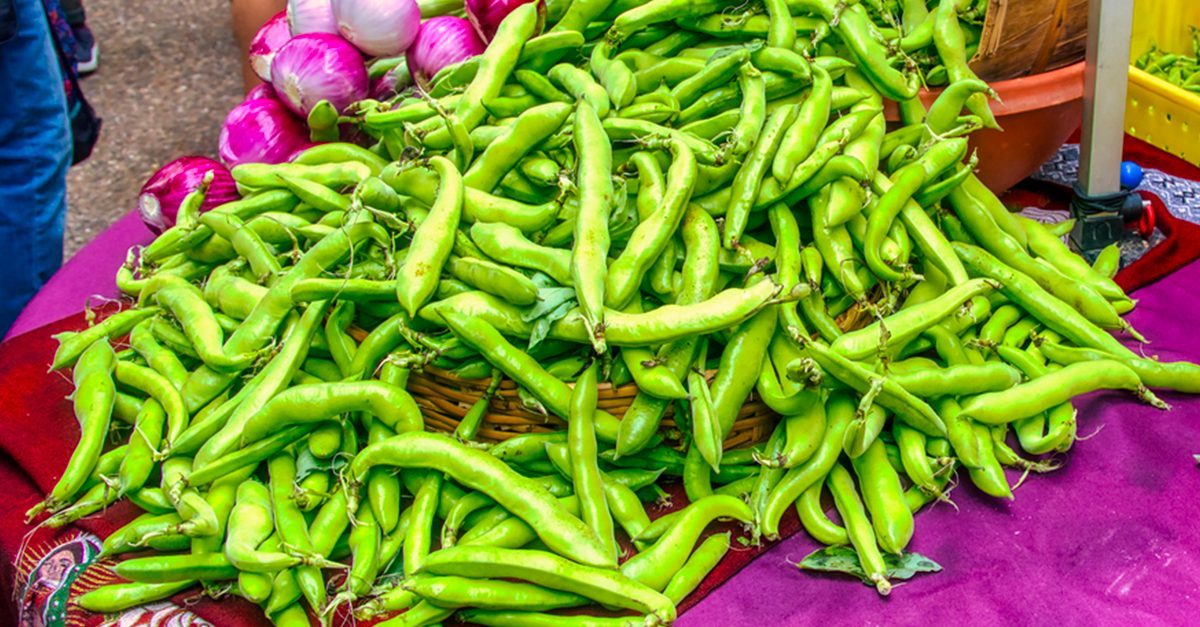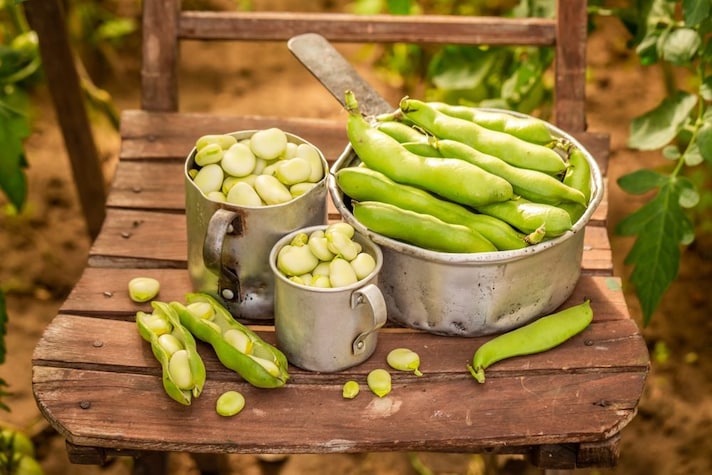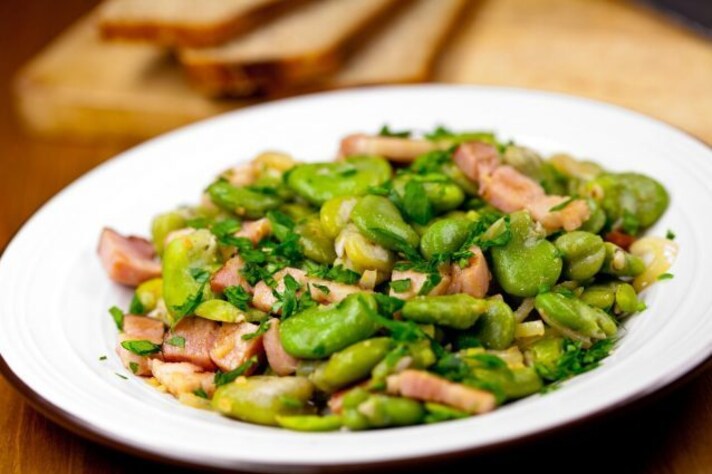How to Choose The Best Fava Beans at The Grocery Store
Bright green pod, firm and crunchy, with shiny, intact and wrinkle-free seeds inside: starting from March, fresh fava beans become one of the most popular legumes on the table.
;Resize,width=742;)
Versatile and nutritious, fava beans are a symbol of spring, an ancient food that was once the star of humble peasant recipes, many of which are still enjoyed today. They are rich in plant-based proteins, vitamins, and minerals. In the U.S., broad beans are often eaten fresh or cooked in a variety of dishes—think hearty soups, mixed into salads, or paired with seasonal vegetables. They’re also a great addition to pasta dishes, sometimes used in place of other legumes, or even served as a side dish alongside grilled meats.
Broad beans are a zero-waste legume, meaning they can be preserved, and even the outer skins are edible when cooked properly. When broad beans are in season, it's the perfect time to take advantage of their freshness. If you're looking for the best fresh broad beans at the grocery store or farmers' market, here’s how to choose the most flavorful ones.
How to Choose Fresh Fava Beans
By now we know that having quality raw materials is the first step to bringing tasty and genuine dishes to the table. If you are buying fresh fava beans, check that the pod is firm, crunchy and a nice bright green: it must not be flaccid or have dark spots. When opened, the seeds inside must be shiny and free of wrinkles. Small fava beans, which arrive at the beginning of the spring season, are generally more tender and sweet, perfect for eating raw, while the larger ones, which ripen completely in the summer, are better suited to cooking, given their slightly bitter note. Are you aiming for dried fava beans? Choose whole ones, without breaks or traces of mold, and preserved in well-sealed bags, away from humidity. It is always advisable to check the origin and, if possible, opt for local varieties, in order to better protect sustainability.
Variety of Fava Beans in The U.S.
Fava beans, scientifically known as Vicia faba, are a versatile and nutritious legume that can be enjoyed in many dishes. While there are various varieties of fava beans cultivated around the world, the U.S. has its own selection of these beans that are available to American consumers, prized for their rich flavor and nutritional benefits.

Fava Beans from the U.S.
Fava beans are primarily grown in the warmer regions of the U.S., where the climate supports their growth. These beans are valued for their protein content, vitamins, and minerals, making them a popular addition to many dishes, from soups and salads to stews and pastas.
In the U.S., fava beans are typically sold fresh or dried, and they are often found in specialty grocery stores, farmer's markets, or organic food retailers. They are widely used in Mediterranean and Middle Eastern cuisines, but they’ve been gaining popularity across the country due to their health benefits and delicious flavor.
Fava Beans in the U.S. Market
While the U.S. doesn’t have specific regional varieties like the ones found in Italy, fava beans grown domestically are often considered part of the broad family of Vicia faba. These beans are cultivated primarily in California, where the climate is ideal for their growth. Fresh fava beans are often available in the spring, while dried beans can be found year-round.
In American kitchens, fava beans are frequently incorporated into dishes like bean salads, stews, and vegetable stir-fries. They are also popular in Mediterranean recipes such as ful medames (a traditional Egyptian stew) or as a base for falafel, giving them a healthy, high-protein twist.

Fava Beans Around the World: Some Dishes to Know
There also are other parts of the world where this legume stands out in equally popular dishes. Comparable to the millennia-long marriage between fava beans and pecorino is the pairing in Spain between habas and jamón, where they are accompanied by Iberian or Serrano ham. We are in a country where there is a large production of fava beans (also for export), with native varieties such as the Muchamiel, one of the most widespread internationally, the Aguadulce, early and resistant to the cold, also grown in Italy, or the Granadina, typical of Granada and Andalusia, which is enjoyed paired with artichokes or cod.
In Egypt, Palestine, Syria, Jordan and Lebanon, ful medames makes its appearance, eaten for breakfast and prepared with dried fava beans slowly cooked and seasoned with oil, lemon and spices. Middle Eastern gastronomy also offers fava bean falafel, while in Iran there is baghali polo, a rice dish with steamed fava beans and dill. In Ethiopia, this legume is used in shiro wat, a stew that can be made with chickpea or fava bean flour; flying to China, fava beans are found fermented in the spicy sauce doubanjiang, where they can be replaced with soy beans, while in Peru they are an ingredient in Andean soups such as kapchi, with mushrooms, potatoes and rice.
;Resize,width=767;)
;Resize,width=712;)

;Resize,width=712;)
